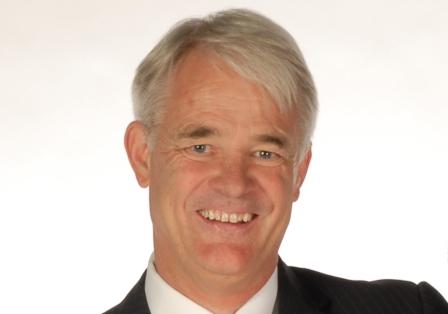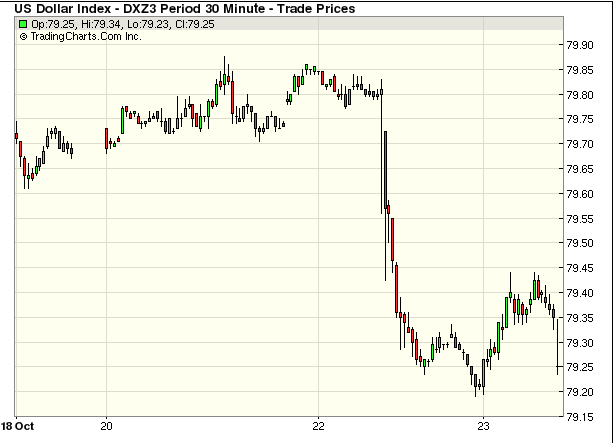Currency
In the 13th century, Marco Polo wrote with utter astonishment at the paper currency standard he witnessed in China:
“[a]ll these pieces of paper are, issued with as much solemnity and authority as if they were of pure gold or silver… and indeed everybody takes them readily. . .”
In the Europe of Marco Polo’s day, ducats and florins were considered money by anyone with half a brain.
Yet today, this paper currency system has come to dominate our world. We’ve handed total control of the money supply to a tiny banking elite.
These central bankers never once stand for election. And despite the tremendous power they wield, citizens still think that they live in a democratic republic. Very curious indeed.
Yet while this entire concept of paper currency is deeply, deeply flawed… there are some currencies which are more flawed than others.
When evaluating a paper currency, it’s imperative to first look at the financial condition of its issuing authority– in this case, the central bank.
The US Federal Reserve and European Central Bank, for example, are in worse condition than Lehman Brothers when that bank went bust in 2008. This makes the dollar and euro quite risky to hold.
But there are other currencies in even worse shape. Let’s examine a few of them:
 1) Canadian dollar
1) Canadian dollar
This one is a shocker for most people; Canada is often considered the darling of Western currencies because (so goes the conventional wisdom) the Canadian economy is strong and natural-resource based.
But if you look at the health of the central bank, Canada wins the award for LEAST capitalized central bank in the west, posting razor thin equity of just 0.53% of total assets.
Given that currency is nothing more than a liability of a central bank, the bank’s poor financial condition weighs heavily on the currency’s resilience.
2) Mexican peso
Mexico’s central bank is actually insolvent. And this is another shocker for those keen to invest in one of Latin America’s largest economies.
In their most recent annual report, Mexico’s central bank posted NEGATIVE equity of 73 billion pesos.
In fairness, this is not an enormous sum of money; however, the amount is growing. And there’s going to come a time when the government will be forced to bail out the central bank.
Yet Mexico’s government is already running a steep budget deficit. And the country’s public debt has been growing rapidly. So the trend clearly shows further deterioration in the fundamentals.
3) Japan
Talk about a train wreck. The Bank of Japan is already in a weak financial position, with net equity of just 1.9% of total assets.
But Japan’s government is forcing them into the most unprecedented monetary expansion in a central banking era where using the word ‘unprecedented’ has become commonplace.
46% of the Japanese government’s budget is financed by debt. Most of this is mopped up by the central bank.
Yet as the government’s debt level already exceeds 200% of GDP, the gross interest payments alone eat up more than 50% of tax revenue.
Japan has no hope of getting out of this alive. The only way out is default, or a currency crisis. Neither of these cases makes the Japanese yen an attractive option to hold.
This list is not exhaustive– the Brazilian real, British pound, etc. also exhibit the same fundamental weaknesses.
As to the ‘healthy currencies’ out there? Norway’s krone is by far the safest currency from a technical perspective; its central bank is the best capitalized on the planet
(Premium members: please refer to your welcome kit for instructions on how to open a Norwegian bank account.)
The Hong Kong dollar also gets high marks, but for unique reasons. More on this in a future letter.


{mp3}mcbuscomoct23fp{/mp3}

The bank of Canada has decided to maintain the overnight lending rate at 1%. That was expected, they did however remove their slight hawkish bias and lower thier GDP expectations (added and highlighted below) in their statement.
In Canada, uncertain global and domestic economic conditions are delaying the pick-up in exports and business investment, leaving the level of economic activity lower than the Bank had been expecting. While household spending remains solid, slower growth of household credit and higher mortgage interest rates point to a gradual unwinding of household imbalances. The Bank expects that a better balance between domestic and foreign demand will be achieved over time and that growth will become more self-sustaining. Real GDP growth is projected to increase from 1.6%(was 1.8%) in 2013 to 2.3% (was 2.7%) in 2014 and 2.6% (was 2.7%) in 2015. The Bank expects that the economy will return gradually to full production capacity, around the end of 2015.
On this release the Canadian Dollar futures traded to $96.25, down over 0.75 on the day.
Drew Zimmerman
Investment & Commodities/Futures Advisor
604-664-2842 – Direct
604 664 2900 – Main
604 664 2666 – Fax
800 810 7022 – Toll Free

n a Q&A with GoldSilverWorlds, Peter Schiff, CEO and Chief Global Strategist of Euro Pacific Capital, explained why the mother of all collapses is still in front of us and shared his top tips on how to protect financially.
Peter Schiff has an outspoken libertarian view on the world and economics. It is no coincidence he will be one of the keynote speakers at the first Liberty Forum Conference 2013 on December 4 to 8. His libertarian view was mainly influenced by his father, more so than any of the books he has read. From a young age, he discussed with his father topics related to government, economics, the Constitution, and history of the US. His personal view and the free market oriented perspective were a perfect fit even if these ideas were in contrast with the majority of economic experts and governments. According to Schiff “many people just buy the establishment; they accept a lot of nonsense.”
Looking at the course of the economy and the markets, Schiff sees a confirmation of the outlook he presented in his books (The Real Crash: America’s Coming Bankruptcy – How to Save Yourself and Your Country, How An Economy Grows and Crashes and Crash Proof 2.0: How To Profit From The Coming Economic Collapse, learn more about these books). The collapse of the dollar is unavoidable and will be the worst of all crises.
 Why the collapse of the dollar is unavoidable
Why the collapse of the dollar is unavoidable
The current economic problems in the Western world are shared by most countries. It mostly boils down to excessive debt levels and too many promises by governments in untenable social welfare states. However, the US is suffering the most from this disease. One could compare it with cancer that is more advanced in some specific places. The US has taken debt to a level unparalleled, beyond anything the government had promised.
Even Japan, with the highest debt to GDP ratio in the developed world, is in a better situation than the US. If a crisis in Japan hits before the collapse of the dollar, it might postpone the dollar crisis simply because money would flow into the dollar. For all the debt that Japan has, the country is not nearly in as bad a shape as the US. “They have been trying to keep the Yen weak in order to export to America, which is a foolish strategy,” according to Schiff. The Japanese have more than a trillion dollars of Treasuries. “They could sell part of their Treasuries to cover at least a part of their debts. It would hurt the US if they started selling.”
Because of the privilege of the US having the dollar as the world reserve currency, the US economy has been able to evolve in a way that no other nation could. Like no other country in the world, the US is dependent on debt, cheap money, artificially low interest rates, and imports. Schiff explains: “When all this comes to an end, the US economy will suffer like no other. Maybe it will be a wake-up call to other countries in what the US did wrong in terms of the destruction of the country.”
….read more HERE including:
-
Only an implosion will impose discipline among politicians
-
A new world reserve currency: gold
-
Tips for financial protection












